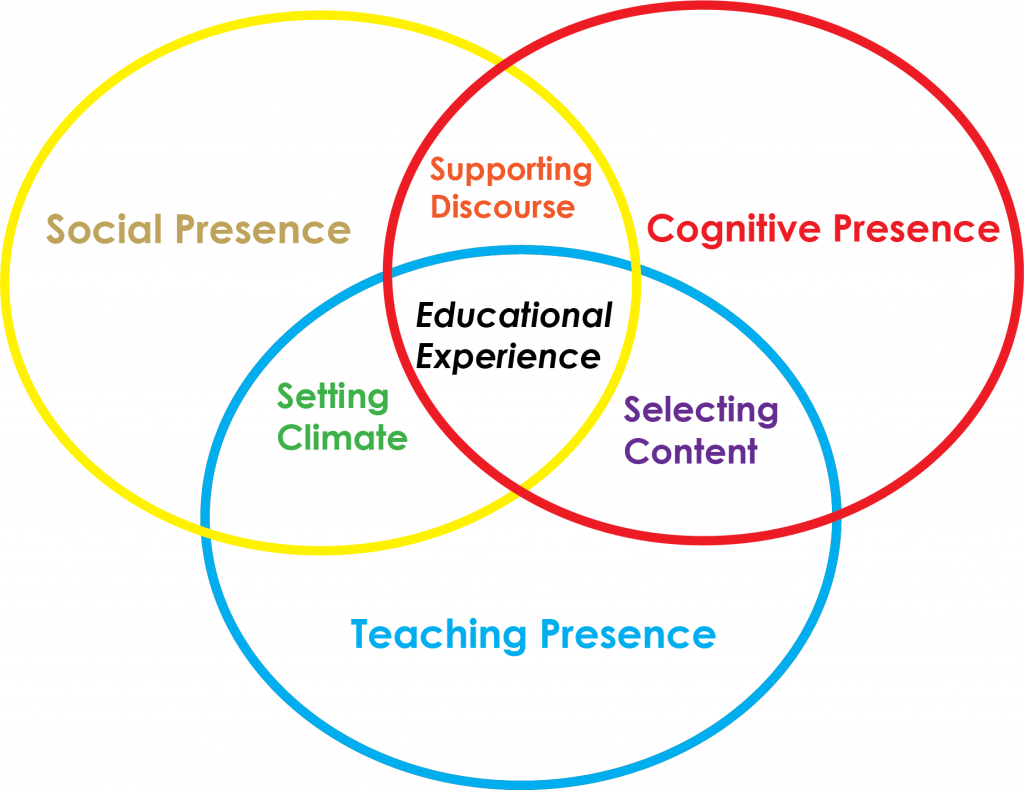2.1 Defining your Learning Community
When you join an online course, you become part of what is known as a Community of Inquiry. In the Community of Inquiry, you will have an Instructor, content to process, and a learning community in which to grow.
This is a learning community that fosters your learning (cognitive growth), in a way that allows you to apply new insights to your life and work. Within a Community of Inquiry, learners have two key roles:
- Maintaining a cognitive presence in the community. This requires a continual process of critical thinking.
- Developing a social presence in the learning community. This involves creating the open and mutual relationships that allow for learning and collaboration to occur.

Cognitive Presence and Critical Thinking
How does learning happen? Is it the result of reading, memorizing, and taking exams? While many learning experiences have these components, the best kind of learning involves constructing new knowledge in a learning community. This requires interacting with new information (for example, from readings, discussions, videos, and lectures). You may receive this information with instructors, from fellow students, or you may search it out to solve questions or problems. Then, together with your learning community, you make connections between this new knowledge and your prior experiences. You also determine how this new knowledge will shape your professional practice.
The Community of Inquiry supports this process through the exchange of ideas, supporting one another exploring connections, and challenging ways of thinking through thoughtful questioning.
Social Presence
If learning occurs in a collaborative community, how does this take place online? Maintaining a social presence in an online environment involves allowing for open communication. Social presence allows you to risk expressing your ideas online, based on the knowledge that your classmates will be respectful and supportive. All members of the community commit to supporting each other in their learning. Though it may be difficult to express some nuances and emotions online, using emoticons can help.[1]
Group work is also a key part of the Community of Inquiry experience. The best online learning experiences happen when you are able to form connections within a team as you work towards your learning goals. The next sections of this module provide strategies for developing your learning community in the context of group work and team development.
- Athabasca University. (n.d.). Community of inquiry coding template. Retrieved from http://cde.athabascau.ca/coi_site/documents/Coding%20Template.pdf; Garrison, D. R., Anderson, T., & Archer, W. (1999). Critical Inquiry in a Text-Based Environment: Computer Conferencing in Higher Education. The Internet and Higher Education, 2(2–3), 87–105. https://doi.org/10.1016/S1096-7516(00)00016-6 ↵

